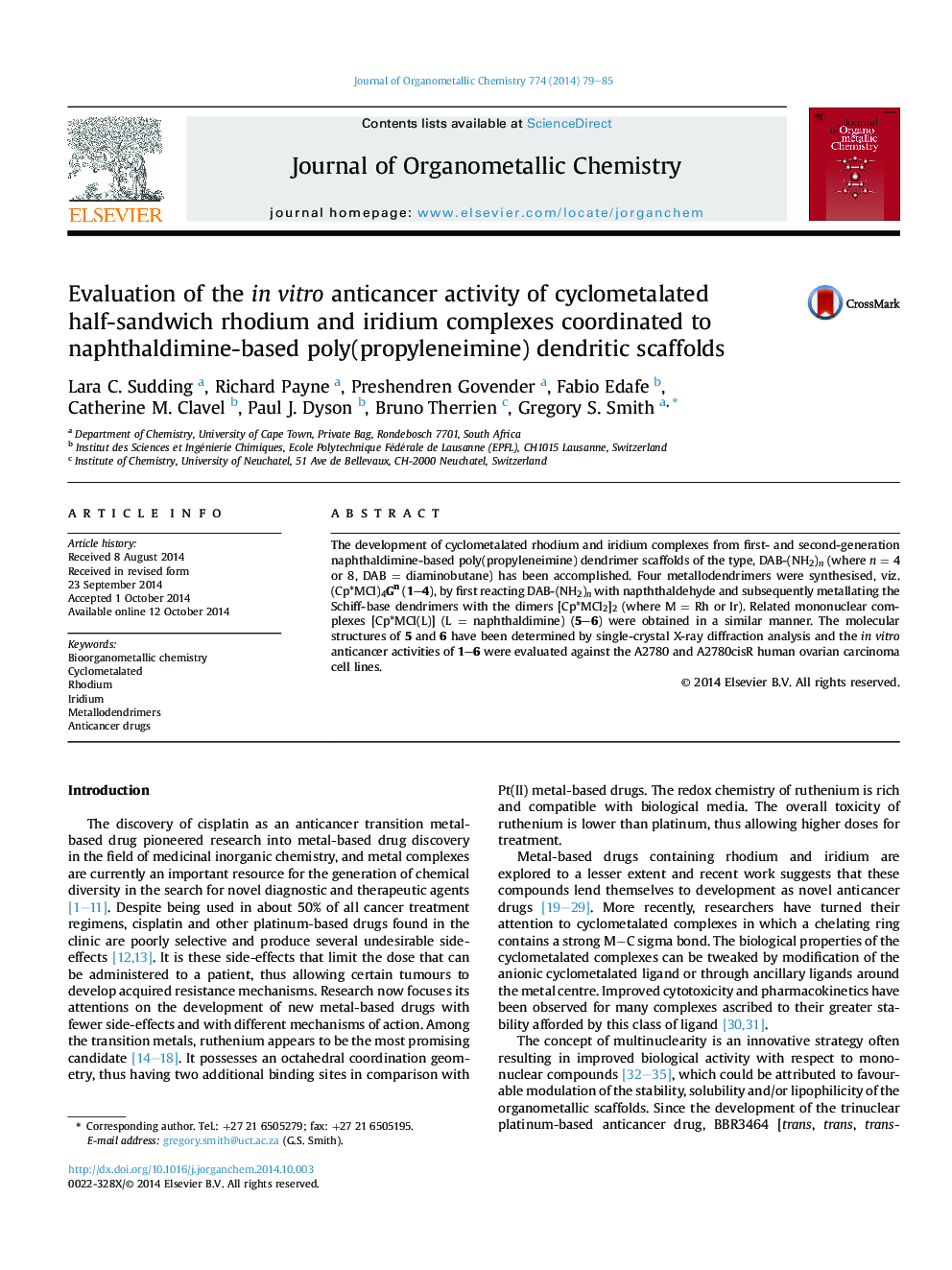| Article ID | Journal | Published Year | Pages | File Type |
|---|---|---|---|---|
| 1321075 | Journal of Organometallic Chemistry | 2014 | 7 Pages |
•Polynuclear rhodium and iridium metallodendrimers have been prepared.•Cyclometalated Rh(III) and Ir(III) dendrimers were synthesized containing naphthaldimine ligands.•The anticancer activity of the metallodendrimers was evaluated.•The octanuclear complexes were found to be the most active.
The development of cyclometalated rhodium and iridium complexes from first- and second-generation naphthaldimine-based poly(propyleneimine) dendrimer scaffolds of the type, DAB-(NH2)n (where n = 4 or 8, DAB = diaminobutane) has been accomplished. Four metallodendrimers were synthesised, viz. (Cp*MCl)4Gn (1–4), by first reacting DAB-(NH2)n with napththaldehyde and subsequently metallating the Schiff-base dendrimers with the dimers [Cp*MCl2]2 (where M = Rh or Ir). Related mononuclear complexes [Cp*MCl(L)] (L = naphthaldimine) (5–6) were obtained in a similar manner. The molecular structures of 5 and 6 have been determined by single-crystal X-ray diffraction analysis and the in vitro anticancer activities of 1–6 were evaluated against the A2780 and A2780cisR human ovarian carcinoma cell lines.
Graphical abstractSeveral multinuclear cyclometallated rhodium(III) and iridium(III) complexes containing C˄N-chelated Schiff-base napthaldimine ligands based on a poly(propyleneimine) dendritic scaffold were synthesised. These metallodendrimers showed moderate to high antiproliferative activity in human ovarian cancer cell lines.Figure optionsDownload full-size imageDownload as PowerPoint slide
